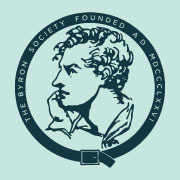Annual Scotland Lecture
14th June 2023
St Celia’s Hall, Edinburgh
[ezcol_1third]
 [/ezcol_1third] [ezcol_2third_end]
[/ezcol_1third] [ezcol_2third_end]
Wine Reception and our Annual Scotland Lecture
FREE EVENT
Our 4th Annual Scotland Lecture is affiliated with the British Association of Romantic Studies Post Graduate Conference. Our members can not only join us for the lecture and drinks reception but will also have the opportunity to attend a special Byron panel, sponsored by the Byron Society, on the 15th of June. We will also be organising a cultural tour in Edinburgh prior to the lecture, details to follow. [/ezcol_2third_end]
The 4th Annual Scotland Lecture will be given by Professor Emily Bernhard-Jackson, who will explore the influences of Byron’s Scottish cultural heritage on his connection with the devil – not Satan, but the devil as represented in folklore, religion and the British cultural subconscious. The talk shows how this connection shaped both critical responses to Byron and the poet’s own beliefs about who he was and how he should behave.
Paying particular attention to the way the devil was represented in Scotland, the talk begins by looking at how the connection between Byron and the devil shaped the poet’s understanding of himself. Thanks to the influence of Calvinism, Scotland retained a belief in the devil as a real being rather than a metaphor for temptation long into the modern era, and stories of Byron’s time in Aberdeen show us that he was familiar with these beliefs as well as with folk representations of the devil as a man with a limp (due to his cloven hoof). The talk refers to Byron’s letters to show that he absorbed these representations and connected them to himself.
It goes on to consider the ways in which this version of the devil also lingered, if less obviously, in English culture during the period in which Byron was publishing. Using engravings of the poet, it shows the ways in which Byron was linked to the devil in public visual representations, and using reviews it shows that he was linked to the devil in print.
The talk thus asserts that Byron’s body was his fate. A child who looks like the devil may well come to understand that he should take immorality as his guide in his life and works; reviewers’ associations between a man who limps and the devil they’ve seen in literature and on stage colour their response to him even before they’ve read his works. Lord Byron’s body literally, and literarily, made him who he was.

